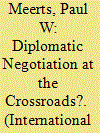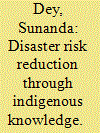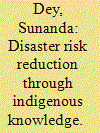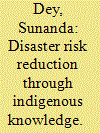| Srl | Item |
| 1 |
ID:
172305


|
|
|
|
|
| Summary/Abstract |
While interstate negotiation is becoming more important than ever in guiding the course of world affairs, it is in danger of being weakened as a consequence of the erosion of multilateral diplomacy. Multilateral organizations and cooperation between states has opened new pathways for negotiation, stabilized the world, and served to equalize power distribution. Growing multilateralism has protected negotiation processes and offered smaller powers more of a say in world affairs. However, with the current trend for powerful countries to undermine multilateral negotiation processes in favor of bilateral and minilateral power-based negotiations, global political gaps are widening. This will undermine small countries and middle powers that want to use diplomatic negotiation as their main tool to influence others. The consequence could be a process of diplomatic negotiation used by hegemonic powers to further their interests to the detriment of the less powerful.
|
|
|
|
|
|
|
|
|
|
|
|
|
|
|
|
| 2 |
ID:
132501


|
|
|
|
|
| Summary/Abstract |
Disasters occur at the interface of society, technology and environment and are fundamentally the outcomes' of the interaction. of these features. In very graphic ways, disasters signal the failure of a society to adapt successfully to certain features of its natural and socially constructed environment in a sustainable fashion (Smith and Hoffman, 2002).
|
|
|
|
|
|
|
|
|
|
|
|
|
|
|
|
| 3 |
ID:
132502


|
|
|
|
|
| Summary/Abstract |
Disasters occur at the interface of society, technology and environment and are fundamentally the outcomes' of the interaction. of these features. In very graphic ways, disasters signal the failure of a society to adapt successfully to certain features of its natural and socially constructed environment in a sustainable fashion (Smith and Hoffman, 2002).
|
|
|
|
|
|
|
|
|
|
|
|
|
|
|
|
| 4 |
ID:
132503


|
|
|
|
|
| Publication |
2014.
|
| Summary/Abstract |
Disasters occur at the interface of society, technology and environment and are fundamentally the outcomes' of the interaction. of these features. In very graphic ways, disasters signal the failure of a society to adapt successfully to certain features of its natural and socially constructed environment in a sustainable fashion (Smith and Hoffman, 2002).
|
|
|
|
|
|
|
|
|
|
|
|
|
|
|
|
| 5 |
ID:
129200


|
|
|
|
|
| Publication |
2014.
|
| Summary/Abstract |
Kivalina is an Inupiat village of 350 people that sits on two square miles of doomed Alaskan coastline. the state of Alaska and the US government consider Kivalina imminently threatened by climate driven erosion and flooding, and the village must relocate very soon so service. every year, Kivalina is battered by hurricane strength storm system twice the size of Texas that threaten to wash the tiny village away.
|
|
|
|
|
|
|
|
|
|
|
|
|
|
|
|